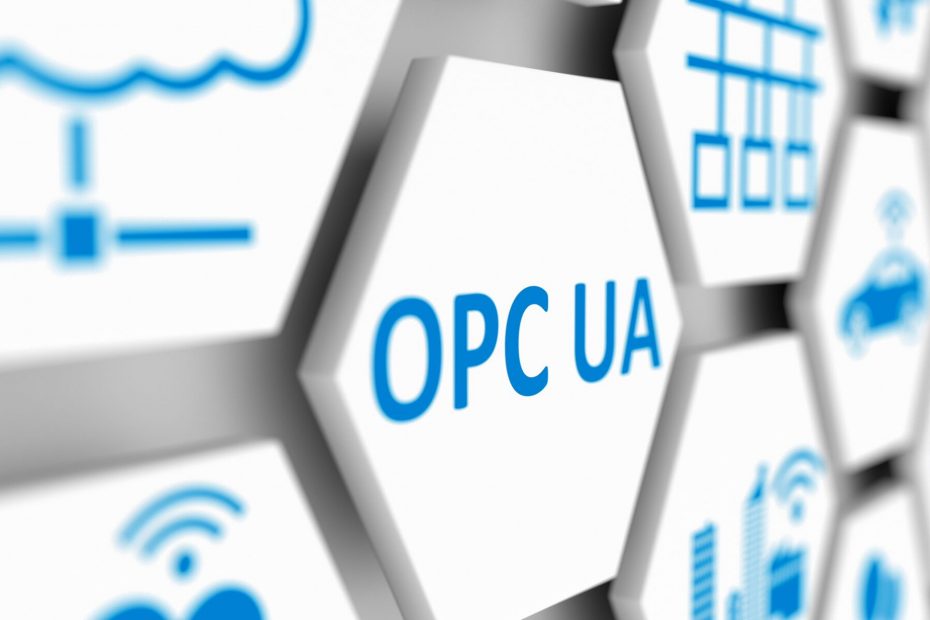Interoperability in production is an important condition for many Industrie 4.0 use cases. With the help of OPC UA, access to production data can be made much easier.
OPC UA plays an important role in the implementation of Industrie 4.0 and requires uniform standards for cross-manufacturer and cross-hierarchy networking of sensors, components, machines and controllers from different manufacturers. In order to standardize production communication, the VDMA, through its members, sees the uniform communication standard OPC UA as the preferred standard. The technical properties of the products to be standardized in OPC UA are concrete device and functionality information. This is described by object-oriented information models in technical specifications, the OPC UA Companion Specifications.
An exchange of experience on this topic, “OPC UA – Tackling and Implementing”, took place on May 23, 2022. As an introduction to the topic, Heiko Herden, VDMA expert for OPC UA, outlined the vision of vendor-neutral interoperability in the industrial environment. He explained why OPC UA plays a significant role in achieving the vision. Johannes Olbort, II4IP project manager at VDMA, then showed the differences between the management shell as the central element for the technical realization of the corresponding digital twin and OPC UA. While OPC UA and the OPC UA Companion Specifications realize networked production from the field to the cloud, the management shell with its submodels enables the formation of value chains for a product across the lifecycle and company boundaries.
Jakob Albert, VDMA expert for OPC UA, spoke in his presentation “umati – What is it? What does it bring?” about how umati creates a plug’n’play solution through which machine operators can easily integrate their machines into the IT system. umati stands for “universal machine technology interface” and forms the framework for the worldwide spread of interface standards based on OPC UA in machine and plant engineering. Albert pointed out that the umati project is driven by a large community and that as a member you can not only avoid unnecessary costs and errors but also benefit from the great marketing power of umati.
Matthias Müller, software engineer at Mitsubishi Electric Europe B.V., presented in his lecture “umati in machine tool building – motivation and application” how machine building got a textbook and application book for OPC UA, the world language of production, with umati. He presented the view on the application of umati using the example of an automatic filling (machine-robot collaboration). Here, the axis positions of a robot were compared on the one hand as pure data analysis and on the other hand via umati as data semantics. Therefore, Mitsubishi Electric supports this in the equipment manufactured by Mitubishi Electric.
In a second practical example, Ernst Esslinger, Director Systems Project Execution at HOMAG GmbH, explained the benefits of OPC UA and why interfaces should be aligned with it. The real beneficiaries, however, are the end customers, because with umati they not only get an interface that is standardized across many industries, but also a definition that is standardized across many industries. The realistic goal here is to require only one interface to the MES/ERP system for the entire production area and thus not to have to program machine-specific interfaces at great expense each time.
Read more
- www.vdma.org/opcua
- For information on OPC UA specifications and Companion specifications please visit: https://reference.opcfoundation.org
Organizer
This event was organized by ProduktionNRW in cooperation with VDMA Baden-Württemberg and Allianz Industrie 4.0 Baden-Württemberg.
ProduktionNRW is the competence network of mechanical engineering and production technology in North Rhine-Westphalia and is implemented by VDMA NRW. ProduktionNRW sees itself as a platform for networking, informing and marketing companies, institutions and networks among themselves and along the value chain. Significant parts of the services provided by ProduktionNRW are funded by the European Regional Development Fund (ERDF).


